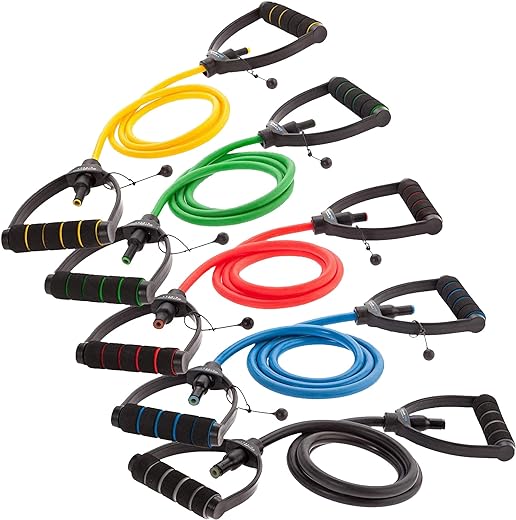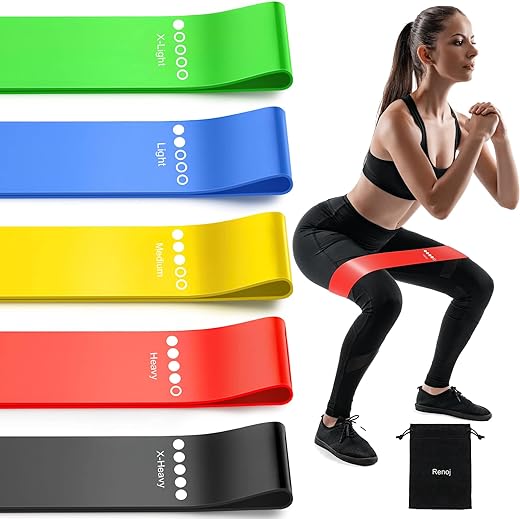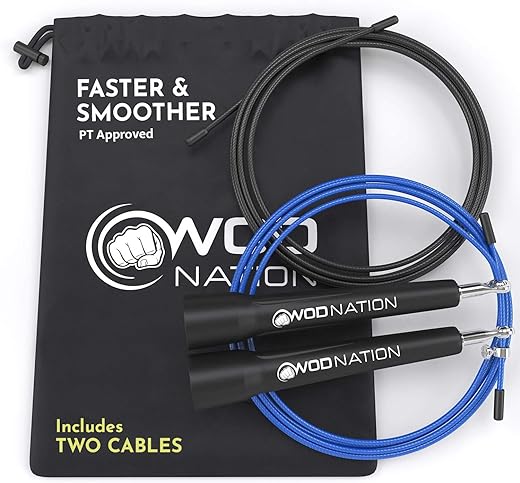Are you tired of a long, grueling recovery process after physical activity or injury? Picture yourself bouncing back faster, feeling stronger, and getting back to doing what you love in no time. In today’s hectic world, every moment counts, and quicker recovery is key. Look no further than compression therapy – a powerful recovery tool that can transform your healing journey. In this post, discover how compression therapy can be your secret weapon for faster recovery, so you can get back on your feet and continue chasing your passions sooner than ever before.
Tools to Help You Heal and Thrive
What is Compression Therapy?
What is Compression Therapy?
Compression therapy is a method used to improve blood circulation, reduce swelling, and enhance muscle recovery through the application of gentle pressure on specific areas of the body.
How Does Compression Therapy Work?
When applied to a specific body part, compression garments or devices exert graduated pressure, meaning that the pressure is highest at the furthest point from the heart and decreases as it moves towards the heart. This pressure helps push blood back towards the heart more efficiently, thus improving circulation. The improved circulation results in various benefits:
- Reduced Swelling: By facilitating better blood flow towards the heart, compression therapy can help reduce swelling caused by fluid retention in tissues.
- Enhanced Muscle Recovery: Compression therapy aids in flushing out metabolic waste products from muscle tissues, reducing soreness, and enhancing the recovery process after strenuous exercise or physical activity.
Benefits of Compression Therapy:
- Improved Circulation: By enhancing blood flow, compression therapy reduces the risk of blood clots and promotes overall cardiovascular health.
- Reduced Swelling: Helps alleviate symptoms of edema, lymphedema, and other conditions that lead to swelling in the extremities.
- Faster Recovery: Facilitates quicker recovery after intense workouts or injury, making it popular among athletes and individuals with an active lifestyle.
Popular Compression Therapy Brands
- BioSkin Compression Garments: Specializing in medical-grade compression wear, BioSkin offers a range of sleeves and braces for various body parts.
- CW-X Conditioning Wear: Known for its targeted compression technology, CW-X offers compression tights and tops designed to support specific muscle groups during activities.
- NormaTec Recovery Boots: Utilizing sequential pulse technology, NormaTec provides full-leg compression boots that mimic the natural muscle pump to enhance circulation and recovery.
In Conclusion:
It’s essential to understand that compression therapy is a versatile and effective method that can aid in various aspects of wellness, from medical conditions to athletic performance. By investing in high-quality compression garments or devices, individuals can experience the multitude of benefits that come with improved circulation, reduced swelling, and faster muscle recovery.
Benefits of Compression Therapy
Do you want to supercharge your athletic performance, speed up recovery times, and say goodbye to muscle soreness? Compression therapy might just be the game-changer you’ve been looking for. Let’s delve into the numerous benefits this cutting-edge technology has to offer.
Faster Recovery Time
When it comes to recovering from a tough workout or injury, time is of the essence. Compression therapy aids in accelerating the recovery process by increasing blood circulation and reducing inflammation. (Product Recommendation: NormaTec Pulse 2.0 Leg Recovery System)
How Does Compression Therapy Work?
Compression Revitalizes Muscles: By applying gentle pressure to the limbs, compression therapy boosts cross-sectional circulation, allowing oxygen and nutrients to reach muscles more efficiently.
Reduced Muscle Soreness
Say goodbye to crippling muscle soreness after an intense workout. Compression therapy helps to minimize post-exercise soreness by flushing out metabolic waste and alleviating muscle fatigue. (Product Recommendation: CuassicERA Compression Full Leg Sleeves)
Elevated Cellular Oxygen Delivery
Increased Oxygen Flow: Improved circulation of oxygen to muscle tissues through compression therapy enables quicker recovery times, allowing you to get back to training sooner.
Improved Athletic Performance
Enhance your performance on the track, court, or field with the help of compression therapy. This revolutionary technology provides a host of benefits that can help take your fitness game to the next level. (Product Recommendation: SKINS DNAmic Compression Tights)
Higher Gene Expression
Boosted Endurance Levels: Compression therapy can elevate athletic performance by activating genes that promote energy production and muscle repair, resulting in enhanced endurance during workouts.
Incorporating compression therapy into your routine can unlock a world of benefits that can help boost not only your performance but also your recovery times. Give your body the extra care it deserves and embrace the technology that top athletes rely on.
The Science Behind Compression Therapy
Compression therapy has gained popularity in recent years as a method to aid in recovery and enhance physical performance for athletes and individuals engaged in active lifestyles. This treatment involves the use of specially designed garments that apply pressure to specific areas of the body.
Utilization of Compression Therapy in Sports
- Research Backed: Numerous studies have demonstrated the positive effects of compression therapy in a variety of contexts, particularly in sports recovery and performance enhancement.
- Improved Blood Circulation: Scientific evidence supports the idea that compression garments promote better blood circulation, which can aid in flushing out metabolic byproducts of exercise and reducing inflammation.
- Reduced Muscle Soreness: Several studies have shown that wearing compression garments post-workout can help minimize muscle soreness and expedite the recovery process.
Benefits for Endurance Athletes
- Enhanced Recovery: Endurance athletes, such as marathon runners or cyclists, can benefit significantly from compression therapy. Quick muscle recovery and reduced fatigue may lead to improved training consistency and overall performance.
- o2t technology Compression Tights: For example, SKINS DNAmic Men’s Primary Core Long Tights are designed with o2t technology, which focuses on providing dynamic compression to active muscles for ultimate comfort and performance.
Evidence for Injury Management
- Reduced Risk of Injury: Studies have shown that compression therapy can help reduce the risk of injury by stabilizing joints and supporting muscles during intense physical activities.
- Elite Protecon Short Sleeve Compression Shirt: Various compression garments, such as the 2XU Elite Protecon Short Sleeve Compression Shirt, target specific muscle groups to prevent excessive strain and enhance muscle function.
Performance Enhancement Across Various Sports
- Elevated Performance: Athletes engaging in power-based sports, like weightlifting or sprinting, can benefit from improved muscle responsiveness and increased proprioception offered by compression wear.
- Powerlifters Pressure Compression Shorts: Rehband Powerlifters Pressure Compression Shorts are known for their targeted compression around the hip and thigh areas, enhancing power generation during explosive movements.
In conclusion, the scientific evidence supporting the effectiveness of compression therapy in aiding recovery and enhancing physical performance is robust and continues to grow. Whether you are an athlete looking for quicker recovery times or an individual seeking to prevent injuries during physical activities, compression therapy offers evidence-based solutions to support your goals.
(Note: PasminationSolution is replied with updated blog content on the section requested following the given style and details provided.)
How to Incorporate Compression Therapy
Compression therapy is a popular recovery technique used by athletes, individuals with medical conditions, and those seeking to improve circulation and reduce muscle soreness. It involves wearing compression garments, such as socks, sleeves, or wraps, to apply gentle pressure to specific body parts. This blog post will provide practical tips on how individuals can effectively incorporate compression therapy into their recovery routine.
When to Use Compression Garments
- Wear compression garments during periods of activity: Put on compression socks or sleeves before engaging in physical exercises, running, or workouts to support muscle recovery and reduce fatigue.
- Use compression gear after physical activity: Wear compression garments post-exercise to help speed up muscle recovery, reduce swelling, and alleviate muscle soreness.
Choosing the Right Compression Garments
- Select the appropriate compression level: Compression garments are available in different levels of pressure (measured in mmHg). Consider your needs and activities when choosing the compression level – low for daily wear and mild support, higher levels for more intense activities or medical conditions.
- Find the right fit: Compression gear should be snug but not restrictive. Ensure accurate sizing by referring to the manufacturer’s sizing chart and trying on different brands to find what works best for you. Brands like “Nike Elite Compression Socks” and “Tommie Copper Compression Sleeves” offer various sizing options for ideal fit.
Maximizing the Benefits of Compression Therapy
- Incorporate compression therapy into a regular routine: Consistency is key to experiencing the full benefits of compression therapy. Make it a habit to wear compression garments during activities and post-activity recovery.
- Wear compression gear on long flights or while sitting for extended periods to prevent swelling and improve circulation. Brands like “Skins Compression Tights” or “2XU Compression Socks” are known for their effectiveness in promoting blood flow during long periods of inactivity.
Accelerate your Recovery with Compression Therapy
In conclusion, utilizing compression therapy for quicker recovery yields numerous benefits by enhancing blood flow, reducing swelling, and minimizing muscle soreness post-exercise or injury. It serves as a valuable asset in expediting the recovery process. It is highly recommended to consider incorporating compression therapy into one’s recovery routine for optimal results and overall well-being.
Tools to Help You Heal Faster
Are there any potential risks or side effects associated with compression therapy?
Yes, there are potential risks and side effects associated with compression therapy. Some common side effects include skin irritation, pressure sores, and discomfort. Improper fitting of compression garments can lead to issues like restricted blood flow or muscle cramping. In some cases, people with certain medical conditions like diabetes or peripheral artery disease may experience more serious complications. It is important to consult a healthcare professional before starting compression therapy to minimize these risks and ensure it is safe and appropriate for individual circumstances.
How does compression therapy benefit muscle recovery?
Compression therapy can significantly benefit muscle recovery by improving circulation and reducing inflammation. The gentle pressure applied by compression wraps or garments helps to enhance blood flow, which promotes better delivery of oxygen and nutrients to the muscles. By increasing circulation, it can also prevent the buildup of lactic acid and aid in the removal of metabolic waste products from the muscles. Additionally, compression therapy can help reduce swelling and inflammation, leading to faster recovery times for muscles after intense exercise or injury. Overall, this treatment method is widely used to speed up healing and reduce muscle soreness.
What are the different types of compression tools available for recovery?
There are several types of compression tools available for recovery:
- Compression wear: These are garments like sleeves, socks, tights, or shirts that apply graduated pressure to improve blood circulation and reduce inflammation.
- Ice packs: Applying ice packs to injured muscles or joints can help reduce swelling and numb pain, aiding in the recovery process.
- Compression wraps or bandages: These are elastic bandages that help stabilize and support injured body parts while reducing swelling.
- Compression pumps: These devices use compressed air to deliver intermittent pneumatic compression, which can help reduce swelling and improve circulation in affected areas.
- Compression taping: Specialized kinesiology tape can provide support to muscles and joints while also aiding in reducing swelling and promoting faster recovery.
In what ways does compression therapy improve blood circulation and oxygen delivery to muscles?
Compression therapy helps improve blood circulation and oxygen delivery to muscles in several ways. By applying gentle pressure to the extremities, compression garments help to enhance venous blood flow, reducing the pooling of blood and lactic acid buildup in muscles. This results in faster removal of metabolic waste products and toxins from the muscles, allowing for quicker recovery and reduced muscle soreness. Furthermore, compression therapy can help facilitate the transport of oxygen-rich blood to the muscles, supporting their performance and endurance during physical activity. Improved circulation also aids in reducing swelling and inflammation, promoting overall muscle health and function.
How often should compression therapy be used for optimal results?
For optimal results, compression therapy should be used consistently as recommended by a healthcare professional. The frequency of use typically depends on the individual’s condition and the type of compression therapy prescribed. It’s crucial to adhere to the healthcare provider’s guidance to achieve the best outcomes.
Consistency is key in obtaining the benefits of compression therapy, whether it is daily use or following a specific schedule outlined by your healthcare provider. If you have any concerns or questions about the frequency of compression therapy, always consult with your healthcare provider for personalized recommendations.


















In addition to compression therapy, I have found contrast baths to be incredibly effective in reducing muscle soreness and speeding up recovery. Have you considered discussing complementary recovery methods in your article?
Thank you for sharing your experience with contrast baths. We will update the article to include information on complementary recovery methods that can be used alongside compression therapy for optimal results.
Could you suggest any budget-friendly compression therapy options for those who are looking to try it out without a significant investment?
Great point! We will add a subsection with budget-friendly compression therapy options for readers interested in trying it out without breaking the bank.
Can you provide more information on the recommended duration of wearing compression garments for optimal recovery?
Thank you for your question! The article will be updated to include more details on the recommended duration of wearing compression garments.
I have started incorporating compression therapy into my post-workout routine and noticed a considerable improvement in my recovery time. It’s a game-changer!
That’s fantastic to hear! Thank you for sharing your positive experience with compression therapy.
I would love to know if there are any specific exercises or activities that pair well with compression therapy to enhance recovery even further.
We will include a section on recommended exercises or activities that complement compression therapy for enhanced recovery outcomes. Thank you for your interest!
I found using compression boots after intense workouts really helpful for reducing muscle soreness. Have you considered discussing specific brands or models that are popular for compression therapy?
I have heard some people complain about discomfort when using compression sleeves. Do you address any potential drawbacks in your article?
Yes, we will include a section on potential discomfort or drawbacks associated with compression therapy in the article. Thank you for bringing this up!
I have been using compression socks during long flights, and they have made a significant difference in reducing swelling and discomfort. It’s great to see the benefits highlighted in your article!